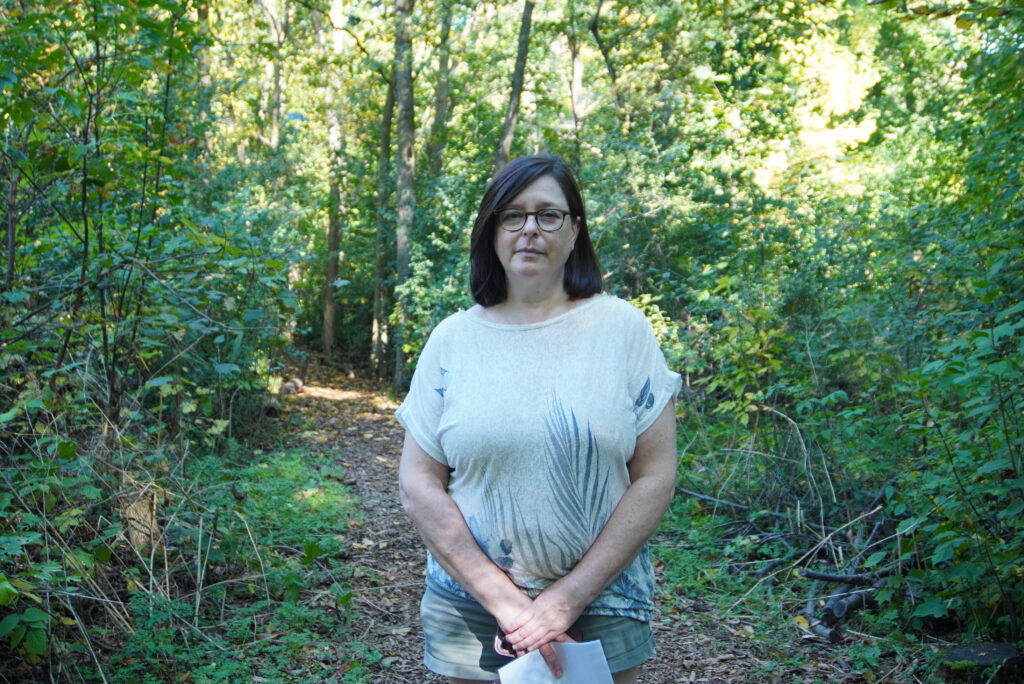By Matthew Daldalian

A series of missing cats in a Laval neighbourhood near the Armand-Frappier woods prompted concern among residents this summer.
Several owners reported their whiskered companions disappearing within weeks of one another, with coyotes suspected to be the culprits.
Amalia Caporicci, a clinical research lead and nearby resident, first noticed lost-cat posters appearing in her neighbourhood in July. Two of her own cats later disappeared and have not returned.
As the Chomedy resident filed reports, put up posters and posted online, she heard from other owners that she wasn’t alone— and that coyotes had been seen near the woods.
“Within that time period, two to three other cats basically disappeared,” Caporicci said. “I realized I wasn’t the only one— people were actively searching for their cats, and it was happening all at once. That’s when I started to get really concerned.”
Other residents reported similar concerns. Sylvie Lozier, a retired resident of the same neighbourhood, said her eight-year-old cat Mimi had always gone outside and returned home without issue, until recently. She noted the recent disappearances were unusual for the area. “If it was one or two cats, sure, but it’s a lot of cats. It’s weird. It’s not normal,” she said.
In July, a stormy night marked the last time Agnes Por, who operates a home daycare and works as an educator, saw her cat. Her cat, Gabi, was used to going outside and always came home, but this time he didn’t.
Por searched the neighbourhood for days, posted notices, and filed reports with the SPCA, but never found him. As time passed, she began noticing more missing-cat posters nearby. “And I see more and more posters of cats missing in this area,” she said. “And I’m thinking, must be a coyote. What else could it be?”

Amalia Caporicci, a clinical research lead and nearby resident, pictured in the Armand-Frappier Woods on Sept. 24 2025. (Matthew Daldalian, The Laval News)
City and political responses
Caporicci said she contacted Laval’s Gestion Animalière, Protection de la faune Laval-Laurentide, the Ministry of the Environment, and the office of Sandra El-Helou, the councillor for her district, Souvenir–Labelle. She said she did not receive responses.
“To date, I’ve just been met with silence. I haven’t had any of my calls returned,” Caporicci said.
Frédéric Mayer, Action Laval leader and mayoral candidate, said he had not heard about the situation through official channels. He believed that when natural habitats change, it’s normal for animals to move into new areas.
Mayer said his party would prioritize communication with residents if elected. “This is at the heart of our values,” he added.
He also argued that Laval currently lacks a dedicated municipal animal service to deal with situations like coyote sightings, leaving residents to handle problems themselves.
While the city has regulations governing pet ownership and contracts animal control to Berger Blanc, it does not operate its own wildlife management team. The closest option is the provincial Environment Ministry, which intervenes when coyotes become aggressive or lose their fear of humans.

One of Amalia Caporicci’s missing cats, Fluffy. (Courtesy Amalia Caporicci)
According to Caporicci, a biologist from the Ministry of the Environment would later tell her that coyotes are now common in urban areas due to habitat loss, but no investigation would be conducted near her neighbourhood due to budget constraints.
Laval has also partnered with the SPCA Lanaudière Basses-Laurentides on pilot projects to manage stray cats through catch-sterilize-release programs, but Mayer said Action Laval would go further by bringing a permanent animal centre to the city.
In a written statement to The Laval News, the City of Laval said “neither the City of Laval nor the mandated animal service have received any reports on this subject.”
The city added that 30 calls were made to 311 about coyotes in 2025. Several reports were received in August from residents near the Armand-Frappier woods, and tracks were observed by Canopée, the organization responsible for managing and patrolling eight of Laval’s municipal woods.
Deterrent patrols were conducted between August 14 and 22, and a hunting camera was installed at the end of the month.
Information posters warning residents about coyotes were also put up at the entrance near Boulevard du Souvenir, near Fire Station No. 2, close to Laval Senior Academy and inside the forest itself.
The signs outline basic safety measures, including keeping pets indoors at night and avoiding leaving food or garbage outside.
Ecological perspective
Grant Brown, a professor of behavioural ecology at Concordia University, said coyotes and other “mid-ranking” predators could possibly be drawn into cities because of food sources and changing habitats.
“Urban environments represent a food resource,” Brown said. “Neighborhood pets are a wonderful source of food. Garbage refuse is a wonderful source of food and available freely.”

Grant Brown, a professor of ecology at Concordia University, speaks to The Laval News in his office on Sept. 24, 2025. (Matthew Daldalian, The Laval News)
He said habitat fragmentation forces animals to choose between moving farther away or entering urban areas. “You’re changing the characteristics of that habitat and you’re changing the resources and the availability of usable habitat,” he said.
Coyotes, he added, adapt easily to urban conditions.
On their part, the Laval Police Service confirmed that coyote calls near their Chomedey headquarters have been a recurring issue.
The Laval Police said they receive coyote-related calls every year in the area near their Chomedey headquarters. However, spokesperson Erika Landry noted that the number of sightings has declined since the construction of condo towers on St-Elzéar Boulevard, and only a few reports have been made so far this year.
The Montreal SPCA warns that outdoor cats face higher risks of injury from predators, cars, and other animals, and recommends microchipping, parasite treatments, and GPS collars.
Residents continue to seek answers
Lozier has since stopped letting her remaining cat outside, Por has advised neighbours to do the same.
Caporicci continued to search for her missing cats and believed the city should have done more to alert residents.
“I think in this particular case, [the city is] responsible for that,” Caporicci said. “They should actually, at the very least, take our calls, listen to us.”



